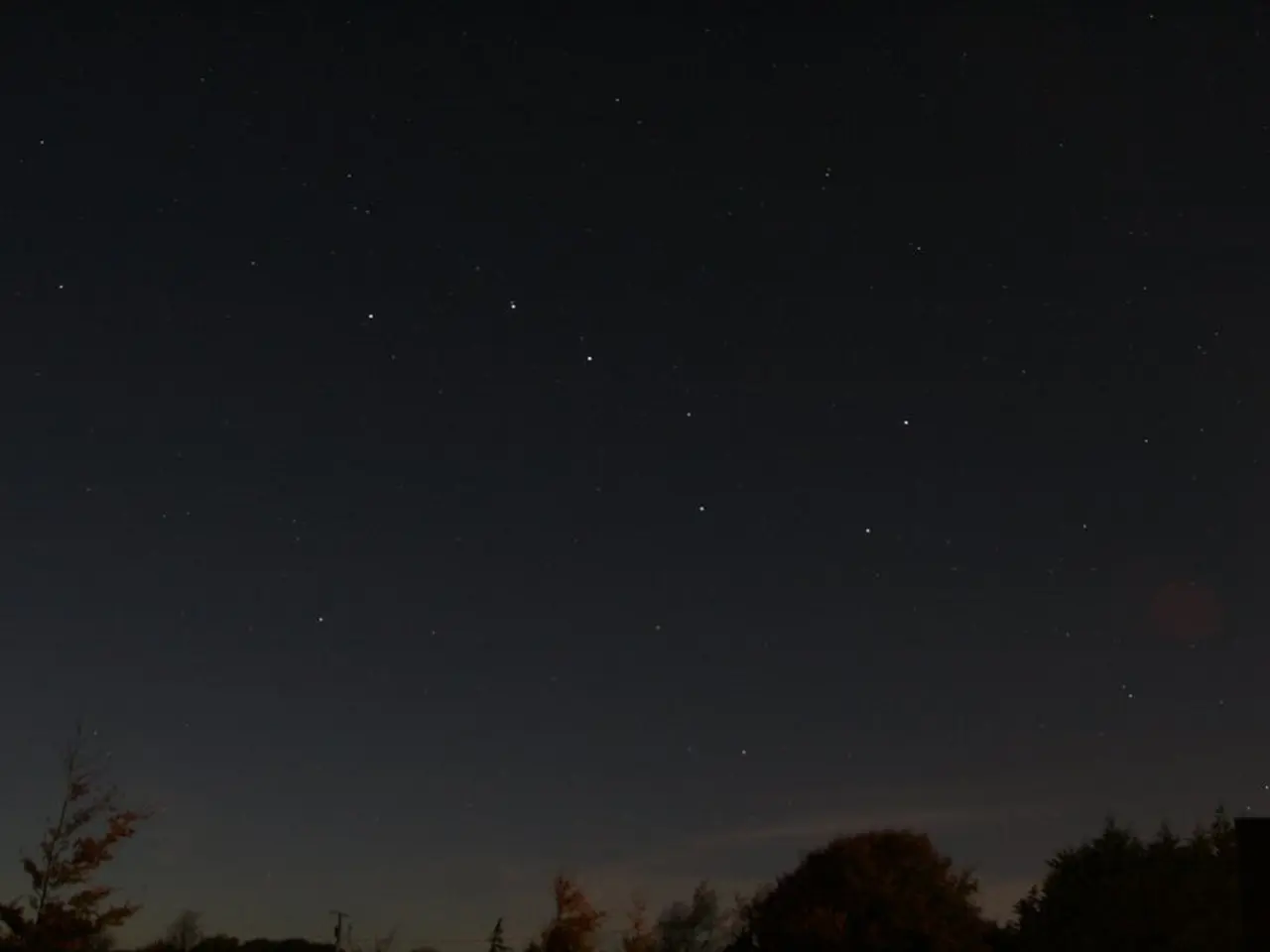Star's violent demise recorded: supernova triggered by black hole's force
A Newly Discovered Type of Supernova: Black Hole-Induced Explosions
A groundbreaking discovery has shed light on a new type of supernova, one that occurs in binary systems where a massive star is gravitationally bound to a black hole. This phenomenon, known as a black hole-induced supernova, happens when the black hole's intense gravitational interaction with the star causes destabilization and eventually leads to the star's explosion.
Key details about this mechanism reveal that the black hole's gravitational pull distorts the star, stretching it from a spherical shape and siphoning off its outer layers over time. This material accretion onto the black hole may brighten the system via emissions before the supernova.
As the black hole penetrates toward the star’s core or destabilizes it, fusion processes in the star's helium core are disrupted, causing thermonuclear runaway and leading to one or more explosive events. This process differs from classic supernova mechanisms, where the star's core collapses after fuel exhaustion. Instead, it is the black hole's tidal disruption and merger with the star's core that triggers the supernova, representing a new subclass of stellar explosions.
The observed event, which occurred approximately 700 million light-years from Earth, involved a star at least 10 times more massive than the Sun and a black hole of similar stellar mass, in a tight, decaying binary orbit. The star's outer hydrogen layer appears to have been ripped off, exposing the helium layer below.
Observations of the star four years before the supernova revealed bright emissions caused by the black hole consuming material from the star. After the supernova blast, the black hole consumed the residual stellar debris, growing in mass. The black hole became more massive and more powerful as a result of the supernova.
This discovery underscores the dramatic impact that black holes can have on the deaths of massive stars. Systems with two or more companions are quite common, and some of these multiples have a black hole as one of the companions. The fates of stars are significantly influenced by their companions in life.
The supernova was observed by numerous ground-based and space-based telescopes, providing a wealth of data for further study. This newly identified pathway for supernovae in binary systems with black holes expands astrophysical understanding of stellar deaths and compact object interactions. The event serves as a testament to the ongoing discoveries in the field of astronomy and the mysteries of the universe yet to be uncovered.
This surprising discovery in environmental-science and space-and-astronomy has highlighted a new type of supernova, the black hole-induced supernova, which is a significant development in the field of science. The process of black hole-induced supernovae provides valuable insights into the impacts of black holes on the deaths of massive stars, often influencing their fates dramatically. Furthermore, this discovery underscores the importance of technology, particularly advanced telescopic tools, in the ongoing efforts to uncover the universe's mysteries.




